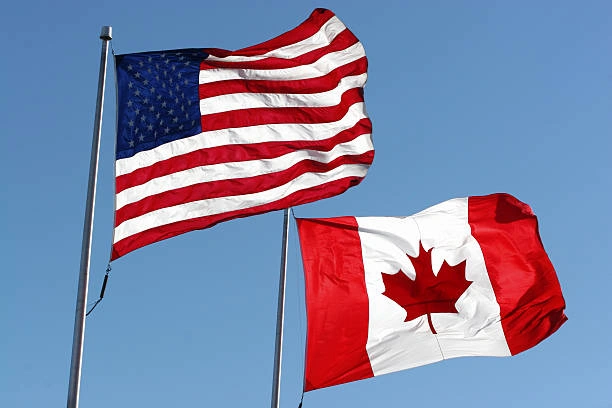Is driving in Canada different from the US? Driving across North America can feel seamless, especially when travelling between the United States and Canada. At first glance, both countries share similar road systems, car models, and traffic laws, making cross-border road trips relatively simple. However, there are important differences that drivers should be aware of. These distinctions are not always obvious, yet they can affect safety, compliance, and overall driving comfort.
Many U.S. drivers heading to Canada, whether for tourism, business, or relocation, assume that the rules are identical. While the basics remain the same—such as driving on the right-hand side of the road—variations in road signs, insurance requirements, speed limits, and winter driving expectations make Canadian driving unique.
Understanding these contrasts ahead of time ensures smoother travel, helps avoid costly fines, and provides peace of mind during cross-border journeys.
READ ALSO:
- Can I Get My License in Canada as a Foreigner?
- Easiest Way to Get an International Driver’s License in Canada
- How to Get an International Driver’s License in Canada?
- What are Canadian Driving Rules?
- What is the Maximum Driving Hours in Canada?
Is Driving in Canada Different from the US?
This is an important question that will be address via the following headlines:
1. Road Signs and Language Differences
In the United States, road signs are standardized in English, with occasional bilingual additions in certain states. In Canada, road signage varies by province.
For example, Quebec primarily uses French road signs, sometimes with minimal English translations. Drivers unfamiliar with French may need extra preparation to understand instructions such as “Arrêt” for stop or “Sortie” for exit.
This bilingual approach reflects Canada’s cultural landscape and requires more attention for U.S. visitors.
2. Speed Limits and Measurement Systems
One of the most noticeable differences is how speed is measured. The United States uses miles per hour (mph), while Canada exclusively uses kilometers per hour (km/h).
A U.S. driver entering Canada must quickly adjust, as a highway sign that reads 100 km/h translates to approximately 62 mph. Misjudging this conversion could lead to unintentional speeding and hefty fines.
Car speedometers usually display both mph and km/h, but it’s still important to stay alert.
3. Driver Licensing and Insurance Requirements
Driving legally across borders involves meeting licensing and insurance rules. U.S. driver’s licenses are generally valid in Canada, provided the visit is temporary. However, proof of insurance is mandatory, and U.S. drivers should verify that their policies extend coverage into Canada.
Rental cars often include cross-border permissions, but not always by default. Longer stays, such as work or study abroad, may require exchanging a U.S. license for a provincial Canadian one.
4. Seasonal Weather and Road Conditions
Canada’s harsh winters make driving significantly different compared to much of the U.S. Snow, ice, and freezing rain create hazardous road conditions that demand skill and preparation.
Some provinces, like Quebec, require winter tires by law from December to March, while in other regions they are strongly recommended. U.S. visitors who are not accustomed to icy driving may find Canadian roads challenging during the colder months. Knowing provincial regulations before travel is key.
5. Fuel Prices and Road Expenses
While both countries rely heavily on personal vehicles, the cost of driving can differ. Gasoline in Canada is sold by the liter, not the gallon, and prices are generally higher than in the U.S. due to taxes.
Additionally, toll roads exist in certain provinces, such as Ontario’s Highway 407, which operates electronically without toll booths. Understanding these differences helps U.S. drivers budget more accurately for travel expenses.
Entry Requirements and Border Timelines for US Citizens
Crossing the border for driving purposes requires proper documentation. Below is a helpful overview of common requirements, timelines, and eligibility considerations for U.S. citizens driving into Canada.
| Requirement | Eligibility Criteria | Timeline/Notes |
|---|---|---|
| Valid Passport or ID | U.S. citizens, Green Card holders | Must be presented at border entry |
| Driver’s License | U.S. state-issued license valid in Canada | Accepted for short-term stays |
| Vehicle Registration | Proof of ownership required | Must be carried while driving |
| Insurance Proof | U.S. auto policy covering Canada | Check policy or request endorsement |
| Winter Tire Mandates | Varies by province (e.g., Quebec) | Required seasonally, typically Dec–Mar |
| Toll Payments | Electronic transponders or invoices | Highway 407 Ontario charges billed by mail |
Driving behavior can also differ slightly between the two nations. Canadian drivers are generally perceived as more cautious and polite, often giving right of way to pedestrians and using turn signals consistently.
Meanwhile, U.S. driving culture varies by region, with some areas more aggressive than others. Adapting to local expectations improves road safety and avoids misunderstandings on unfamiliar roads.
In the unfortunate event of an accident, U.S. drivers should be aware that Canada’s healthcare system operates differently. Emergency medical care is available to all, but U.S. travelers may need travel health insurance to cover costs.
Roadside assistance services like CAA (similar to AAA in the U.S.) are widely available and can provide towing, fuel delivery, or emergency lockout help. Preparing in advance reduces stress if unexpected issues occur.
Take Home
Driving in Canada is not drastically different from driving in the United States, but the details matter. From understanding metric speed limits and winter tire regulations to preparing correct documentation and insurance coverage, these small adjustments make the difference between a smooth trip and unnecessary complications.
Whether you’re planning a short Canadian road trip, crossing for business, or relocating for study or work, being informed helps you stay safe, legal, and confident behind the wheel.
By respecting both the similarities and differences, U.S. drivers can enjoy Canada’s beautiful landscapes, vibrant cities, and scenic highways without worry. With preparation and awareness, driving in Canada becomes not only manageable but also an enriching part of the travel experience.




